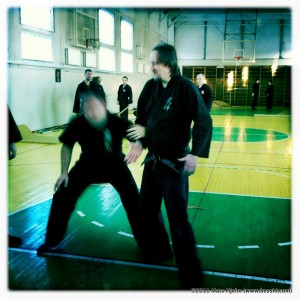From Shiro Kuma's Weblog by kumablog

The Ten Chi Jin from 1987
During my last seminar in Chemnitz, I was asked to explain to the group the Bujinkan system. It was a discovery for many students so I decided to share here in this blog the importance of the Ten Chi Jin Ryaku no Maki.
The first thing you have to get clearly is that the Ten Chi Jin Ryaku no Maki is the best system ever created to give a martial artist a chance to develop his creativity. This is the kaitatsu explained by sensei recently.
Too often the Ten Chi Jin Ryaku no Maki is underestimated by the teacher more inclined to dwell on the rich legacy of the nine schools. This is a major mistake as without the Ten Chi Jin Ryaku no Maki no student can really grasp the essence of sensei’s teachings.
.
.
What is the Ten Chi Jin Ryaku no Maki?
It is a program put out by sensei in the eighties as a common basic program for the beginners. The first “official” edition was published in Japanese back in 1983 under the title “Togakure Ryû Ninpô Taijutsu”. Divided into three parts which are Ten, Chi, and Jin, it presented in a certain order the elemental bricks necessary to study the nine schools and their specificities. After a few years of practice, it had been reviewed and modified to be even more practical. In 1987, we received from Japan, the first English version of this new system. The majority of the techniques were the same, but the repartition had been changed to facilitate the learning. The first published versions of this new Ten Chi Jin Ryaku no Maki (TCJ2) were done in 1991 by Pedro Fleitas in Spanish and by Mariette Van der Vliet in English. The French Protek was published by me in 1998. An adapted version in German by Steffen Frohlich was also released during the same period. Many other incomplete and transformed versions were published subsequently.
To be continued…






…


 …
…
 …
…
 …
…